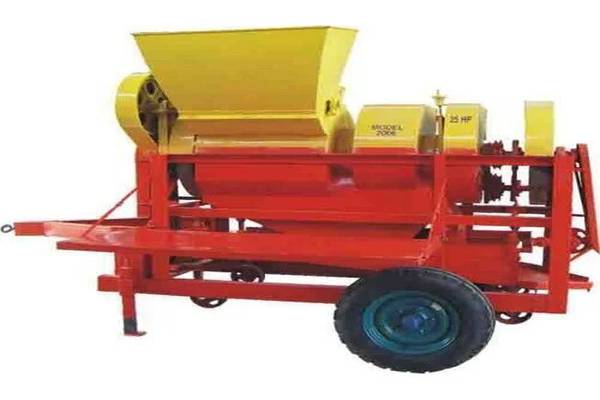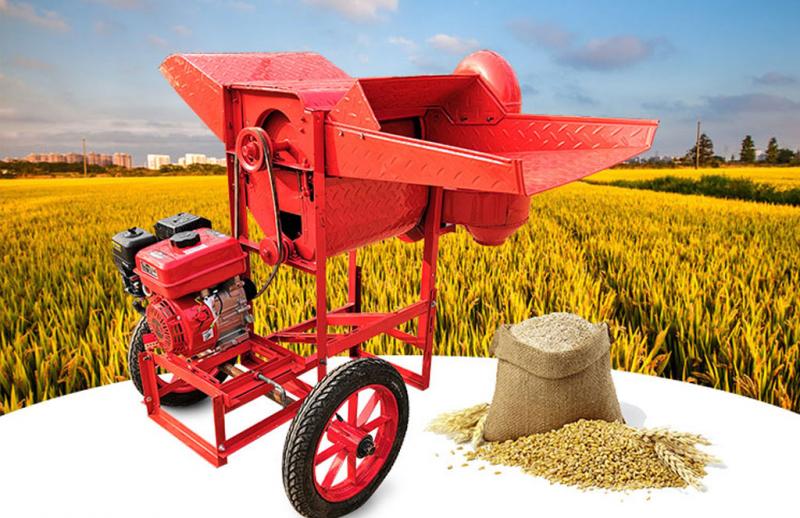Agricultural Threshers
Drafted by: vijaychourey26@gmail.com
An agriculture thresher machine is a mechanical device designed to separate grains from harvested crops such as wheat, rice, corn, and soybeans. Traditionally, this process was done manually, which was labor-intensive and time-consuming. The invention of thresher machines revolutionized agriculture by automating the grain separation process, significantly improving productivity and reducing the burden on farmers.
History and Evolution of Threshing
The concept of threshing dates back to ancient times when people used flails and animals to separate grains from their husks. Over the centuries, the methods evolved, and mechanical threshers were introduced during the industrial revolution. These early machines were often powered by steam engines, and their efficiency continued to improve with advancements in technology.
Types Of Agriculture Thresher Machines
Manual Threshers
Manual thresher machines are simple, hand-operated devices suitable for small-scale farmers. They are affordable, easy to maintain, and do not require a power source. However, their processing capacity is limited, making them suitable only for farms with low crop yields.
Stationary Threshers
Stationary threshers are early models that were immobile and powered by hand, animals, or a stationary engine. Farmers would bring their harvest to the thresher, and it would be processed on the spot. Although these machines were a significant improvement over manual threshing, they were limited in terms of mobility and processing capacity.
Combine Harvesters
The advent of combine harvesters marked a major breakthrough in agricultural technology. These modern marvels combine several functions, including cutting, threshing, and winnowing, in a single automated process. Combines are self-propelled machines that can cover vast fields efficiently, drastically reducing labor requirements and time.
Tractor-Powered Threshers
Tractor-powered threshers are a popular choice for small to medium-sized farms. These machines can be attached to a tractor, harnessing its power to operate the threshing mechanism. They offer greater mobility and flexibility compared to stationary threshers, making them suitable for farms with varying terrains.
Mobile Threshing Units
Mobile threshing units bring the threshing process directly to the fields. These self-contained units are mounted on trucks or trailers, making them highly versatile and efficient. They are especially beneficial for large-scale farms where transporting crops to stationary threshers may not be practical.
Working Principles Of Thresher Machines
The working principle of an agriculture thresher machine involves the following steps:
Harvested crops are fed into the thresher machine's inlet.
The thresher unit utilizes rotating components, such as beaters or drums, to separate the grains from the husks or pods.
The separated grains fall through the sieves, while the remaining straw or chaff is ejected as waste.
The cleaning unit further refines the grain quality by removing debris and impurities.
The processed grains are collected and ready for storage or further processing.
Components Of An Agriculture Thresher Machine
Threshing Unit
The threshing unit comprises rotating components like spikes, rasp bars, or concaves, which effectively thresh the crops.
Separation Unit
The separation unit, often equipped with sieves, separates the grain from the straw and other materials.
Cleaning Unit
The cleaning unit ensures that the grains are free from debris, dust, and other impurities before being collected.
Power Source
The power source varies depending on the type of thresher machine and can be an electric motor, a diesel engine, or a tractor's power take-off (PTO).
Control Panel
Modern thresher machines come with user-friendly control panels to regulate various functions and settings.
Advantages Of Using Thresher Machines
6.1 Increased Efficiency
Thresher machines significantly increase harvesting efficiency, enabling farmers to process larger quantities of crops in less time.
6.2 Labor and Time Savings
By automating the grain separation process, thresher machines reduce the need for manual labor, allowing farmers to focus on other essential tasks.
6.3 Enhanced Grain Quality
The gentle and precise operation of thresher machines ensures minimal grain damage, preserving the overall quality and market value of the produce.
6.4 Versatility and Adaptability
With different types and sizes available, thresher machines can handle various crops, making them suitable for diverse farming operations.
Choosing The Right Thresher Machine
Crop Type and Yield
Select a thresher machine that suits the specific crops you cultivate and matches your expected yield.
Farm Size and Scale
Consider the scale of your farm to determine the appropriate capacity and power requirements of the thresher.
Budget Considerations
Evaluate the cost of the machine, including maintenance expenses, and ensure it aligns with your budget.
Maintenance And Safety Tips
Regular Cleaning and Inspection
Perform routine cleaning and inspection to keep the machine in optimal condition and prevent mechanical issues.
Lubrication and Parts Replacement
Properly lubricate moving parts and replace worn-out components to maintain the machine's efficiency and extend its lifespan.
Safety Guidelines and Precautions
Follow safety guidelines provided by the manufacturer to ensure the well-being of operators and prevent accidents.
Impact Of Thresher Machines On Agriculture
Economic Impact
Thresher machines have contributed to increased agricultural productivity, leading to economic growth and stability for farming communities.
Social Impact
By reducing the demand for manual labor, thresher machines have improved the quality of life for farmers and their families.
Environmental Impact
The adoption of thresher machines has led to more efficient resource utilization and reduced post-harvest waste, positively impacting the environment.
Future Trends And Innovations
As technology continues to advance, we can expect further improvements in thresher machine design, efficiency, and sustainability.








